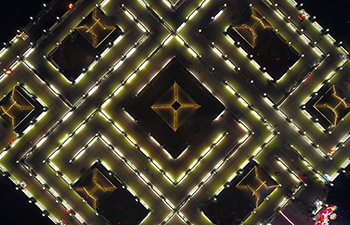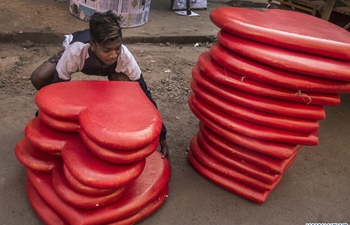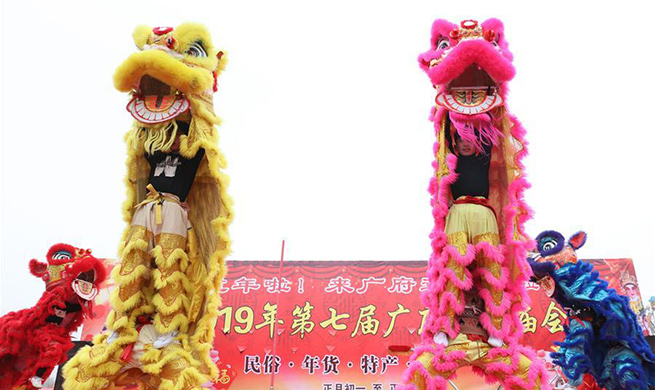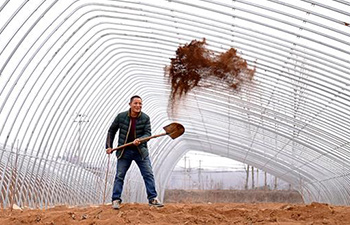TIANJIN, Feb. 13 (Xinhua) -- Upon arriving at the Astor Hotel, Liu Sutong was fascinated by what unfolded before his eyes: wooden doors, shining wall lamps, exquisite hand-made carpets and a grand piano, not to mention the over 3,000 pieces of cultural relics and exhibits kept in the hotel.
Liu and his friends, from northeast China's Jilin Province, especially booked the Astor Hotel for spending the week-long Spring Festival holiday in north China's Tianjin Municipality.
"I've heard about this century-old hotel before I came here, and its architecture attracts me," Liu said.
The Astor Hotel, founded in 1863 by a British merchant, was one of the 440 European-style architectures in the area built during a time when British concession began to be set up in Tianjin.
Having stood for over a hundred years, the buildings with styles ranging from the Renaissance and gothic to romantic, have sparkled multifunctional development today.
"America's 31st president Herbert Hoover once spent his honeymoon in room 388," said He Lin, the hotel's general manager, adding that a number of Chinese and foreign celebrities had stayed here in the past. Last year, the hotel received about 150,000 guests.
With the help of the local government, the Astor Hotel has undergone several renovations, retaining the old address, name and original building style after over 150 years.
Cai Yunpeng, director of the Tianjin Housing and Urban-Rural Construction Commission, said that the local government issued a regulation in 2005 to protect, renovate and revitalize these old buildings, which have been transformed into banks, financial institutions and hotels.
By introducing a big data management system, the information of 683 historical western-style buildings in Tianjin has been uploaded into a housing resources database.
"The historical relics need to be protected in the process of development," Cai said, adding that the first batch of 60 buildings has been settled for attracting investment, welcoming enterprises in areas such as artificial intelligence, biomedicine and new energy.
Built in 1922, Prince Qing's Mansion was given its name after it was bought by Zaizhen, the fourth Prince Qing in the Qing Dynasty (1644-1911). The mansion's original courtyard and landscape, as well as wood carvings, oil paintings and chandeliers, have all been preserved.
"This historical mansion opened to the public in June 2018 and has so far received a total of 420,000 visits," said Yan Liang, general manager of its management company.
"We will further protect and explore Tianjin's historical and cultural resources and enhance the city's unique charm," Cai said.

















